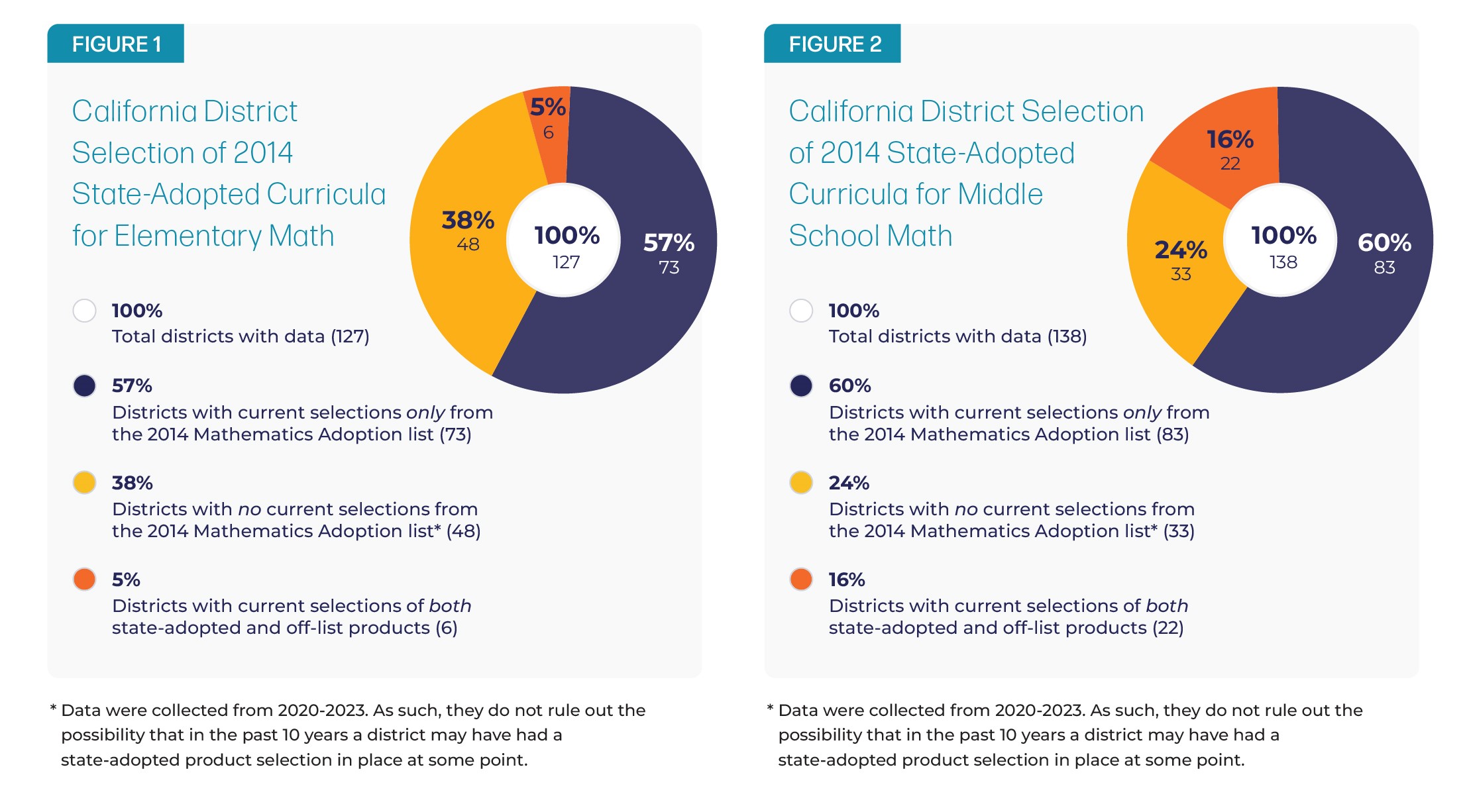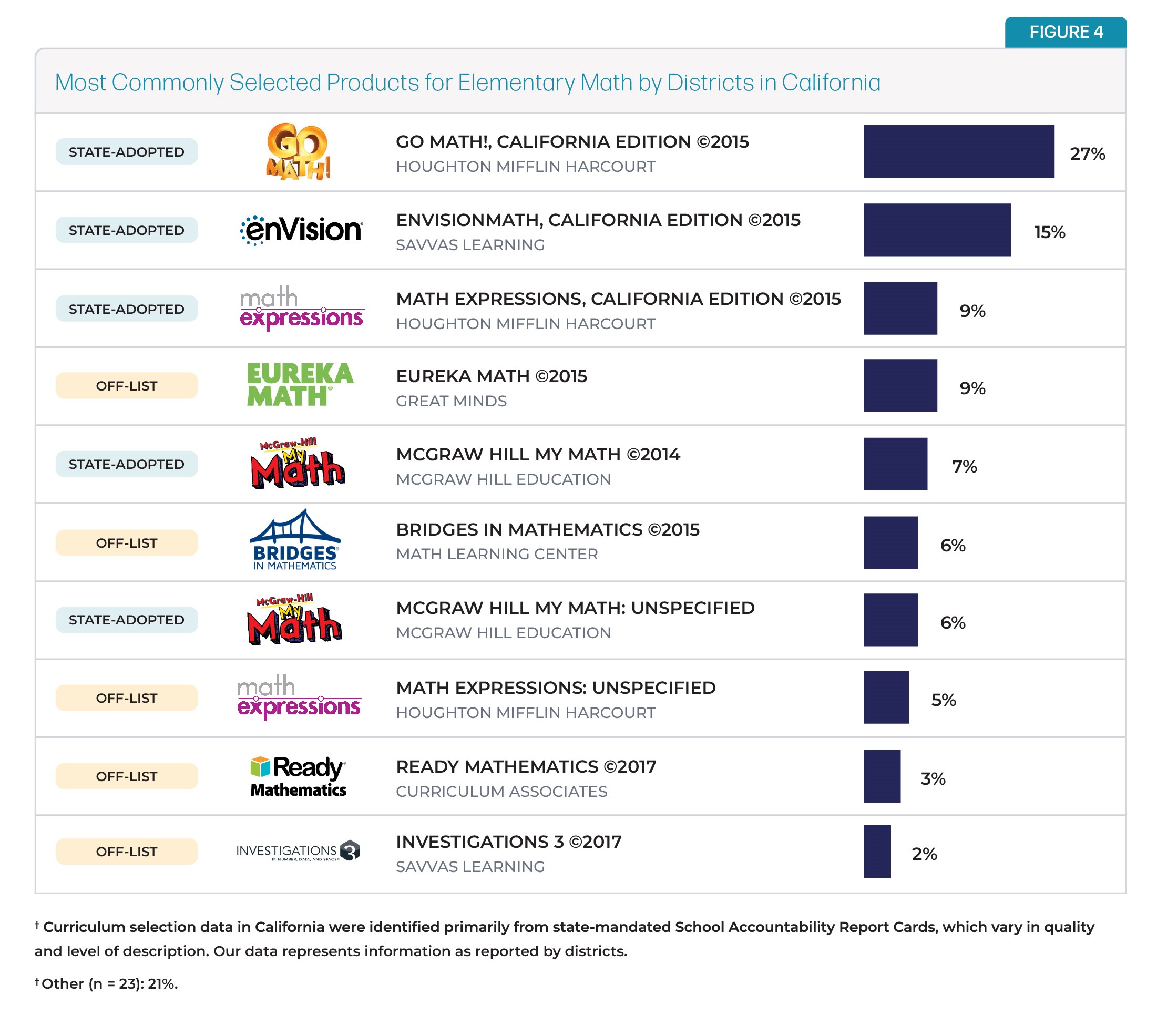K-8 Math Curriculum Landscape: Spotlight California
This report illuminates the K–8 math education market in California, the nation’s largest public education system. CEMD analyzed curriculum selection data from California’s largest districts to understand the influence of the 2014 state adoption list on K–8 math curriculum currently in place in districts.
Get the full report
The Center for Education Market Dynamics • November 07, 2023
This report zooms in on California to illuminate the K–8 math education market in the nation’s largest public education system, serving nearly six million students. Given that a years-long process is building to a much-anticipated math adoption in California, CEMD’s data provide a glimpse into the impact it’s likely to have across the state.
In 2014, the California State Board of Education (SBE) adopted a list of math curricula based on Common Core State Standards (CCSS). The state, however, did not require districts to purchase materials from the list, so long as the ones they chose were aligned to state standards.
Our analysis suggests that in 2022, a majority of the districts in our research sample have in place at least one product from the 2014 approved list of instructional materials. For elementary math, 62% percent have products from the 2014 list in place; for middle school math, 76% of districts have products from the 2014 list in place.
 This research sample represents California districts that serve elementary or middle school students and have an enrollment of over 10,000; it is a subset of CEMD’s Impact Core, a sample of all US public school districts that represents over 52% of public school students nationwide.
This research sample represents California districts that serve elementary or middle school students and have an enrollment of over 10,000; it is a subset of CEMD’s Impact Core, a sample of all US public school districts that represents over 52% of public school students nationwide.
About 40% of districts in our sample opted for an off-list curricula — many of which are newer, national products rated high-quality by EdReports. Specifically, 43% of districts have a current selection of off-list curricula for elementary math, and 40% have a current selection of off-list curricula for middle school math.
Considering the lasting effects of the 2014 list, we anticipate that the state’s forthcoming adoption — currently planned for 2025 — will have a significant, long-term impact on math instruction throughout the state and beyond. This upcoming adoption cycle is enabled by the 2023 Mathematics Framework, a set of guidelines for math instruction that established direction for the creation of a new list of instructional materials.
 The data presented in this report provide a baseline against which to examine the impact of the forthcoming adoption. This baseline will solidify further with new data collected in 2023–24 — and will provide ample research and analysis opportunities not only for CEMD, but for researchers and policymakers fieldwide to dig into the impact of curriculum policy and district curriculum choices on California students in the coming years.
The data presented in this report provide a baseline against which to examine the impact of the forthcoming adoption. This baseline will solidify further with new data collected in 2023–24 — and will provide ample research and analysis opportunities not only for CEMD, but for researchers and policymakers fieldwide to dig into the impact of curriculum policy and district curriculum choices on California students in the coming years.
Want to read the full report?
Download the PDF
